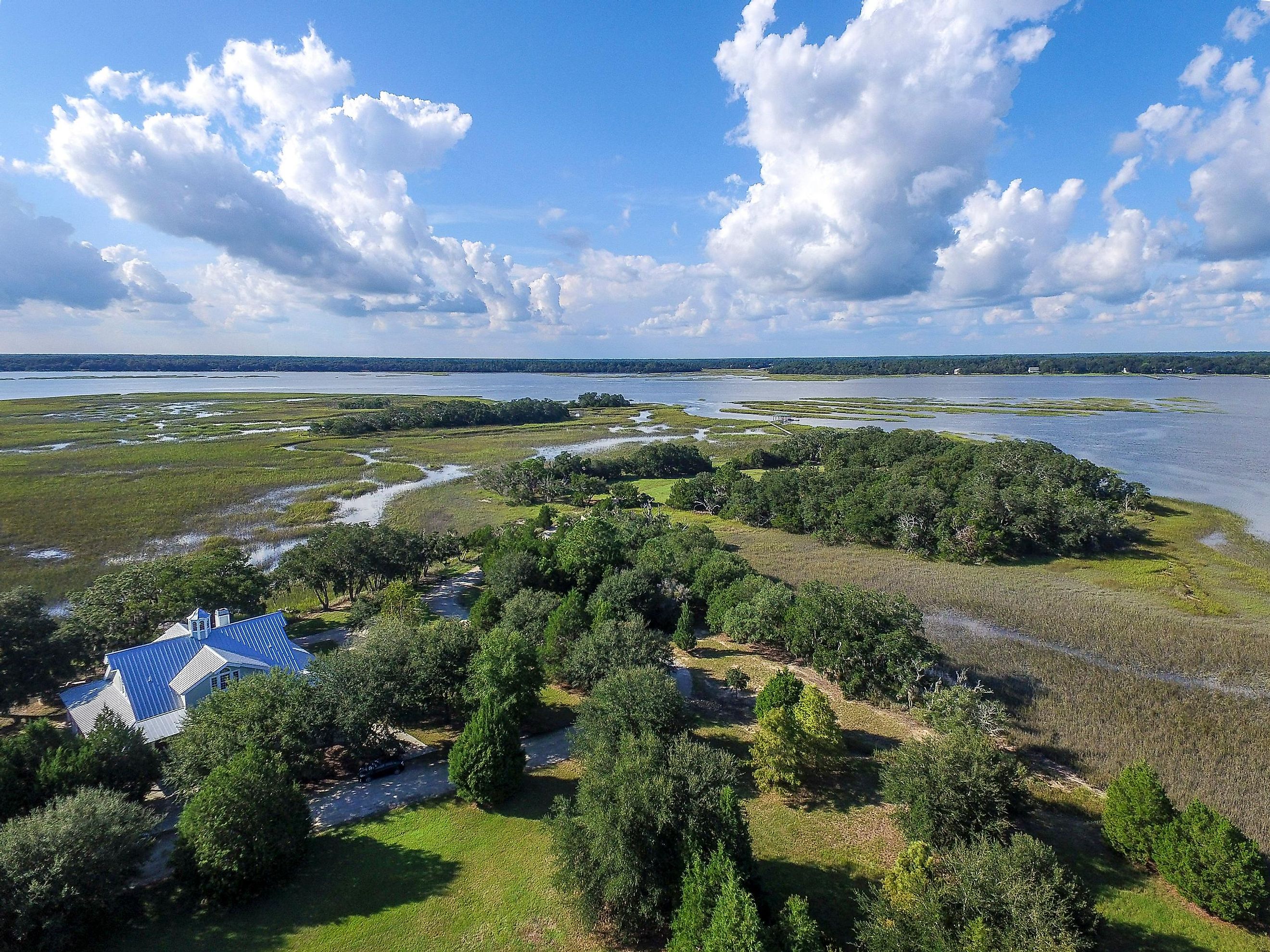
Wadmalaw Island
The "sleepy" nature of Wadmalaw Island is a change of pace compared to the bustling crowds seen in Charleston. This South Carolina island may lack an extensive offering of restaurants and hotels, yet it still attracts tourists yearly. Wadmalaw Island's history and one-of-a-kind attractions are a must-visit for curious travelers keen on exploring one of the most undeveloped and rugged destinations in the Southeastern US.
Where Is Wadmalaw Island?
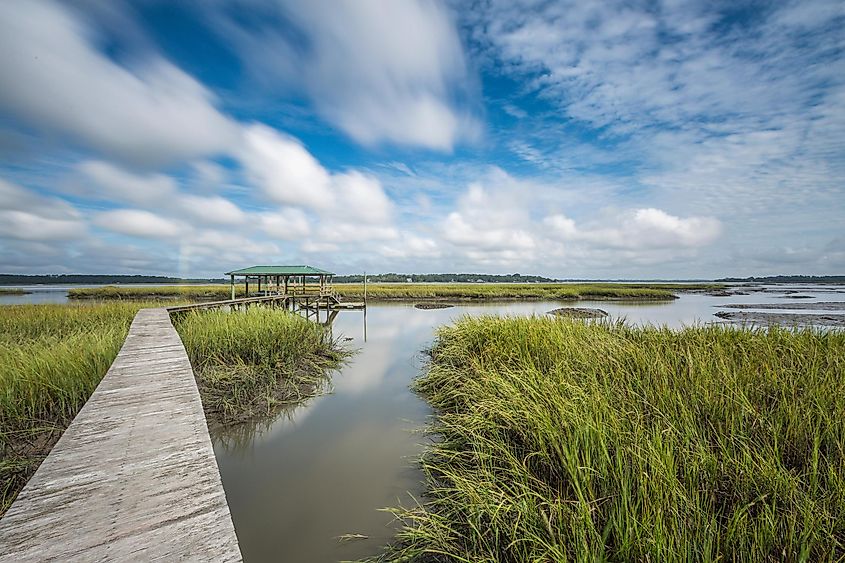
Wadmalaw Island is located southwest of Johns Island in Charles County, South Carolina. It also sits in South Carolina's Lowcountry. Wadmalaw Island is a fairly "quiet" and unpopulated destination compared to the population (and tourist crowds) in neighboring areas of Charleston, Folly Beach, Kiawah Island, and Seabrook Island. The island is relatively small, stretching approximately 10 miles long and 6 miles wide, with ties to the mainland via a bridge over Church Creek.
Geography And Climate Of Wadmalaw Island
Wadmalaw Island is considered part of the Sea Islands. These are a collection of approximately 100 islands along the Atlantic Coast within the Southeastern United States for about 300 miles. The Sea Islands comprise South Carolina, Georgia, and Florida tidal and barrier islands.
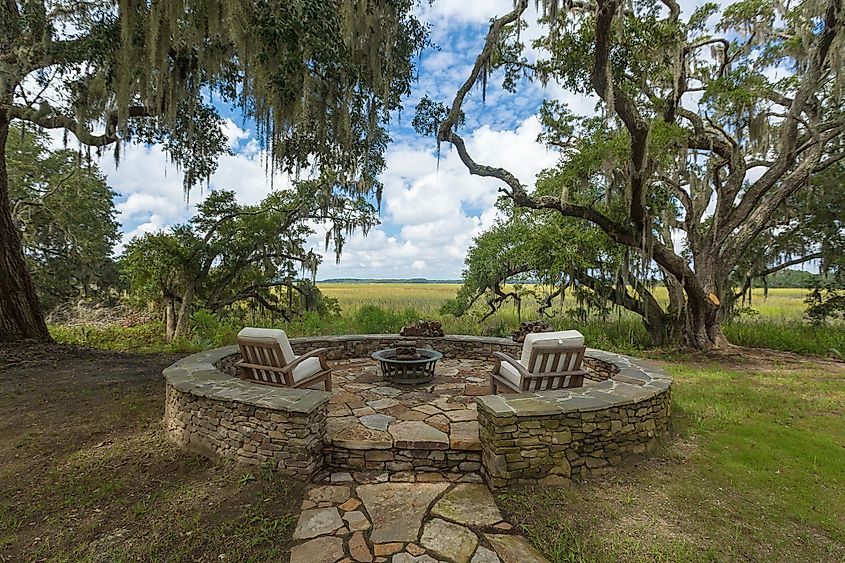
The islands typically experience a subtropical climate, experiencing average rainfall of approximately 52 inches yearly. Moreover, the island's rich soils and temperate climate encouraged agricultural operations, particularly family farms that have been around for multiple generations. The state of South Carolina also contained tidal marshes, which supported crop growth like rice and indigo.
History Of Wadmalaw Island
The origins of the island's name are unclear, though it's speculated that it may derive from an Indian word (or phonetic pronunciation of a word) in the Bohickett language. Wadmalaw Island has been spelled differently, including Wadmela, Wadmelaugh, Wadmelaw, Wadmilaw, Waha, and Waheawah.
The islands' first inhabitants were believed to be Cusabo Native Americans, a collective term referring to several tribes, including the Kiawahs, Ashepoos, Bohicketts, Edistows, Escamacus, and Stonos. The Lowcountry of South Carolina was said to be inhabited by several groups of Native Americans. On June 1666, England's Captain Robert Sanford and his crew landed in present-day Rockville (a town on Wadmalaw Island). That month, he claimed the island for England and the Lords' Proprietors. In fact, the English claimed the Sea Islands as a part of the Carolina colony.

Due to the island's rich soils and temperate climate, Wadmalaw Island has supported agricultural activities. Historically, there were several plantations in and around Wadmalaw Island. The island also included plantations for cotton, indigo, and rice crops. The island's plantations used slaves from the West Indies and West Africa. Many of the plantation slaves from West Africa were knowledgeable about rice cultivation, teaching plantation owners how to cultivate rice.
After the American Civil War ended, Wadmalaw Island experienced financial hardship, much like the entirety of the South. In the Sea Islands, plantations were confiscated, and the surrounding land was given to formerly enslaved people. In the current century, Wadmalaw Island retains its reputation as a quaint and non-commercialized destination compared to neighboring destinations. It's also considered to have one of South Carolina's most unspoiled lands.
Tourist Attractions On Wadmalaw Island
Wadmalaw Island does not have the same extensive collection of hotels, restaurants, and tourist destinations as its neighboring destination of Charleston and other nearby locales. However, the island is home to a handful of interesting historical and natural attractions, including the Charleston Tea Garden and the Deep Water Vineyards!
Charleston Tea Garden
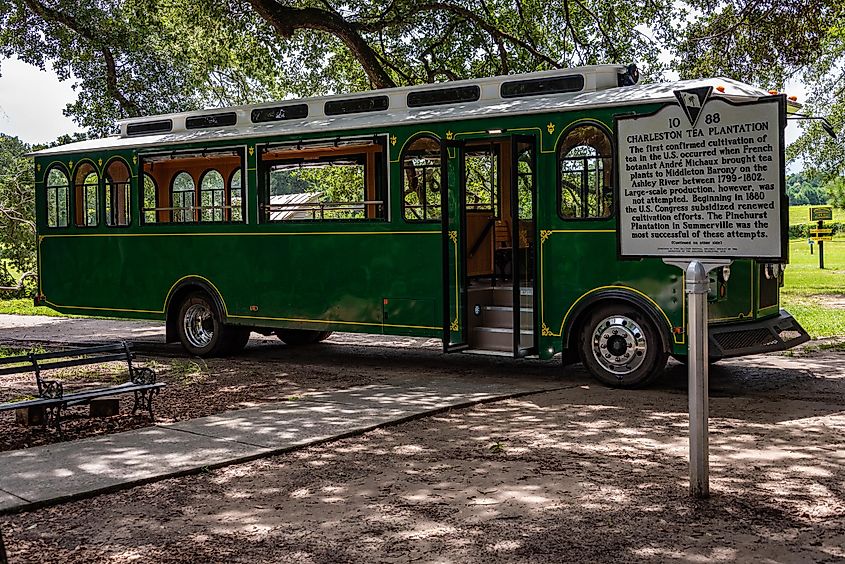
The Charleston Tea Garden is the only destination in the US that makes tea on a commercial scale. Also known as the Charleston Tea Plantation, this historic attraction comprises 127 acres of land on Wadmalaw Island. Wadmalaw Island's subtropical climate, sandy soils, and suitable average rainfall create ideal growth conditions for crops like the Camellia sinensis tea plant. Overall, the Charleston Tea Garden grows over 320 black and green tea varieties of this plant!
In 1963, the Lipton Tea Company purchased the farm, a potato farm on Wadmalaw Island. The company converted it into an experimental farm. Specifically, the company researched award-winning tea plants that were grown and cultivated by Dr. Charles Shepard. Dr. Shepard founded Summerville's Pinehurst Tea Plantation; However, after he died in 1915, the plantation shut down, resulting in the wild growth of his tea plants for nearly half a century. These "wild" tea plants were transplanted from the abandoned property in Summerville to the experimental farm.
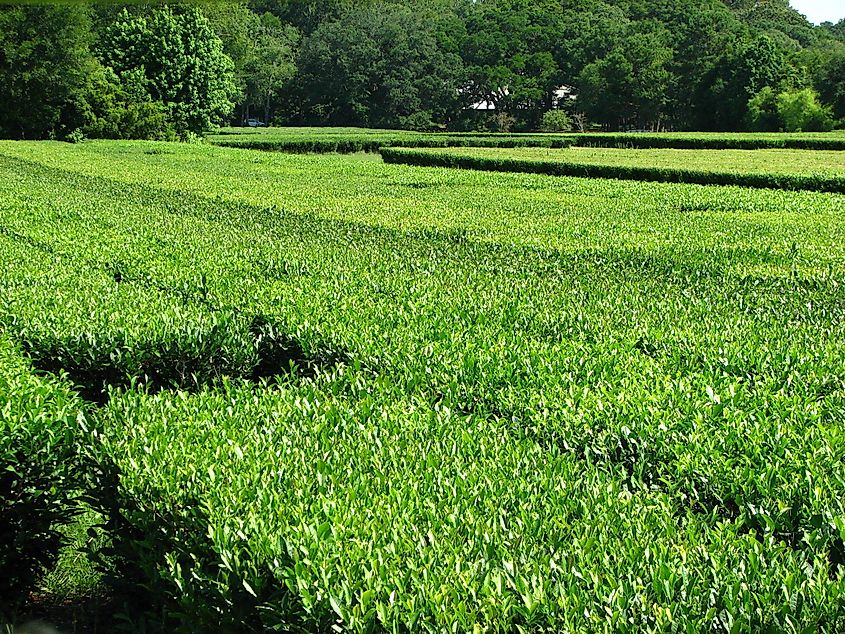
In 1987, William Barclay Hall, a third-generation tea tester, purchased the property from Lipton with the desire to commercially produce the tea leaves. By 2003, Hall partnered with the Bigelow Tea Company, which used its tea expertise to transform the farm into a viable business and American icon.
Tourists visiting Wadmalaw Island can easily visit the Charleston Tea Garden, which is open seven days a week (except for some holidays). Visitors can experience a trolley ride through the tea fields, visit the garden's greenhouse, and buy souvenirs at the Charleston Tea Garden's gift shop.
Deep Water Vineyard
The Deep Water Vineyard is Charleston's only domestic winery. This specialty winery crafts white and red wines using four varieties of grapes. Particularly, the Deep Water Vineyard grows muscadine grapes, a fruit variety native to the Southeastern US. This domestic winery even produces and bottles its wines!
Located about half an hour from Charleston, Wadmalaw Island's Deep Water Vineyard offers its visitors walking tours, highlighting its property features like a garden, a local pond, and its on-site gift shop. Visitors can also visit the winery for wine tastings or enjoy a picnic on the property.
Wadmalaw Island may not be bustling with activity compared to Charleston, but this South Carolina gem is worth a visit for its unique charm, laid-back vibes, and storied past. Wadmalaw Island is a destination for travelers keen on exploring the South without the noisy crowds or busy streets.











